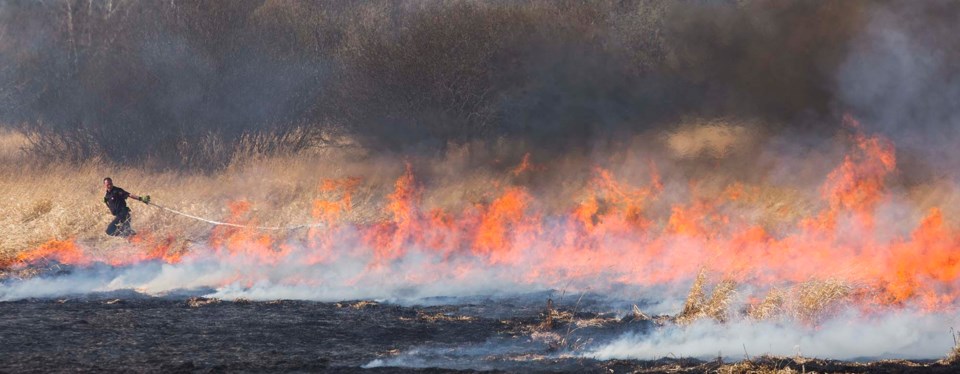ST. ALBERT: About 25 to 50 per cent of the world’s surface is at greater risk of wildfire today than it was 40 years ago, new research suggests — and climate warming means there’s more fire in our future.
Natural Resources Canada researcher Piyush Jain co-authored a study in Nature Climate Change Nov. 25 on how climate change is driving extreme fire weather.
“Fire is a very tricky thing to predict,” Jain said, as you need the right alignment of weather conditions, fuel, and ignition sources for it to happen.
Still, researchers know certain factors such as high heat, strong winds, and dry conditions contribute to fire risk in the form of extreme fire weather, he explained.
“It’s only three per cent of fires that are responsible for 97 per cent of area burned,” Jain said, and it’s the top five per cent of those extreme fire weather days that drive those mega-fires.
Jain and his team sought to check the links between global heating and extreme fire weather, particularly in the last decade, which featured seven of the hottest years on record and eight of the most extreme fire weather years ever recorded.
The team studied global extreme fire weather and the meteorological drivers behind it from 1979 to 2020. They found that the fire weather index (a measure of fire risk based on wind speed and fuel availability) rose 14 per cent globally, with significant increases happening over a quarter to half of the world’s burnable land mass. Falling relative humidity and higher temperatures were the two biggest drivers of this increased risk.
Jain said this study confirms that heat and dryness are the two main drivers of extreme fires and extreme fire weather.
“The atmosphere continues to heat more and continues to dry under climate change. That is why we are seeing this increased fire risk,” Jain said.
The paper found that many of the regions that had more extreme fire weather also had more extreme fires in recent years. Jain noted that Western Canada has seen a significant rise in fire risk, with B.C. seeing its three worst fire seasons to ever happen in 2017, 2018, and 2021 (the latter of which included the destruction of Lytton, B.C.).
The paper noted that climate change brings more lightning, which means areas with more extreme fire weather may see more fires in the future. Governments may need to make substantive changes to fire management practices to prevent themselves from being overwhelmed.
The paper is available at nature.com/nclimate.



